| June 04, 2019 | Volume 15 Issue 21 |
|
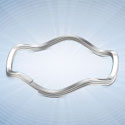 | New Spirawave® Wave Spring Series
Smalley's Nested Spirawave Springs are now available standard from Smalley. Nested springs are flat wire wave springs with multiple turns, coiled in parallel to produce high forces. When replacing a stack of single-turn wave springs with one nested spring, misalignment and uneven loading are eliminated, making assembly and installation simple.
Learn more. |
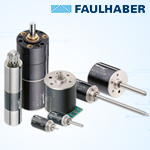 | Optimizing Micro Motion: One Step At A Time
Robust assembly, high speed range, and exceptional performance in the harshest environments make FAULHABER stepper motors ideal for demanding positioning applications. These compact stepper motors range in diameter from 6mm to 22mm, and are available with modular servo components such as encoders, gearheads, lead screws for linear motion, and more.
Learn more. |
| | Feature articles |
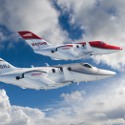 | How HondaJet used NASA facilities for over-the-wing engine mount development
These days, computers handle a lot of the work for designing an airplane, but when it comes to seeing how well the new design will really handle in the air, there's nothing like a real-life test in a wind tunnel. NASA's National Transonic Facility is one of the best, and when the agency's engineers aren't using it to test their own aeronautic innovations, private companies are sometimes able to use the available space by reimbursing NASA for time not already scheduled.
Read the full article. |
|
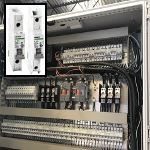 | Best-kept secret in the circuit breaker industry
When STELPRO, a Quebec-based manufacturer of integrated heating solutions for the HVAC industry, asked partners all along its supply chain to identify cost-saving opportunities, installing NOARK miniature circuit breakers in panels on all their equipment was one solution that provided long-term quality and savings (typically 30 to 50 percent in price). NOARK's five-year warranty was a huge added bonus.
Read the full article. |
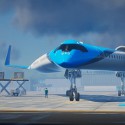 | KLM invests in Flying-V blended wing concept aircraft research
Is "V" the shape of things to come? With their eyes on sustainability, lightweighting, and efficiency, KLM Royal Dutch Airlines has signed a new cooperative agreement to work with Delft University of Technology in the Netherlands to further develop the blended wing, boomerang-shaped "Flying-V" aircraft design, which aims to carry the same number of passengers as the Airbus A350 (314) but use 20 percent less fuel.
Read the full article. |
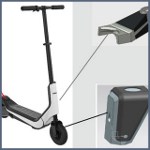 | Joining fiber-reinforced plastics to metal
Designing and building lightweight vehicles challenges manufacturers to combine functional metal components with lighter-weight, highly durable carbon fiber-reinforced plastics. Researchers from the Fraunhofer Institute in Germany use a variety of solutions for joining such disparate materials -- including a new one where resin melts into and surrounds a metal plate. They use a simple scooter as an application example.
Read the full article. |
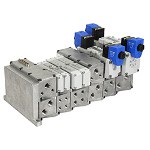 | Right-sizing valve manifolds linked to smart machine design
Valves are generally sized by cylinder bore, actuation speed, and required pressure. In the past, the entire valve manifold would be sized based on the largest force/speed requirements of the pneumatic system, or by splitting between two manifolds (low and high pressure/flow). However, this methodology results in waste, both in terms of compressed air and the expense and size of the manifold, not to mention the labor needed to install two manifolds.
Read this informative Parker Hannifin blog. |
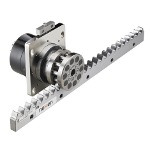 | Alternative to traditional drive systems
Nexen Group has introduced a stainless steel version of its patented precision roller pinion system (RPS). The Nexen RPS engages two teeth simultaneously to achieve superior accuracy with zero backlash at any length. The system is also extremely quiet and 99 percent efficient. Stainless steel makes the system corrosion resistant, with a long life of up to 36 million meters. Nexen's RPS provides a low-maintenance, durable alternative to rack and pinion, ball screw, and belt drive technology. The RPS is used for a wide range of applications including laser cutting, plasma cutting, and gantry applications.
Learn more. |
 | Top Tech Tip: Stepper or servo motor --
Which should it be?
Bring out the full capacity of your machines through the most efficient mechatronic design. Hurley Gill, Senior Applications/Systems at Kollmorgen, outlines servo and stepper motor baseline capabilities for selection criteria like torque, speed, accuracy, and repeatability. Technical advantages and disadvantages are discussed, helping machine designers select the best motor-drive system for their application.
Read the full article. |
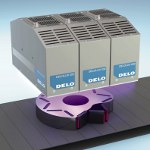 | Two-component adhesives revolutionized with light fixation
DELO has developed light fixation two-component epoxy resins that provide unprecedented process speed -- only 5 sec irradiation time! Thanks to the hybrid chemistry of DELO-DUOPOX DB8989, users will realize faster, less complex production processes and simplified logistics. Reliable final curing, including shadowed areas, is done the same way as regular two-component products, either at room temperature or at a faster speed by using heat curing at 80 C for 60 min. The adhesive is able to achieve a tensile shear strength of 28 MPa on aluminum. Applications include structural bonding of rare earth magnets in electric motors. It is also suitable for opto-electronic applications in cameras for automated driving due to low outgassing and shrinkage.
Learn more. |
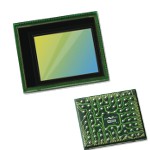 | Dual-mode automotive image sensor
The OV2312 automotive image sensor from OmniVision Technologies enables multiple functions in one camera, reducing the total system cost, space, and power budget for driver state monitoring (DSM) and viewing applications like video conferencing. The ability to capture both RGB and IR images with one global shutter (GS) sensor reduces the number of cameras needed. It provides dual-mode cameras with motion-artifact-free images at high resolutions of 1,600 x 1,300 at 60 fps and 1,280 x 720 at 90 fps. Because this is the smallest 2MP GS sensor in its class, cameras can be placed out of sight from drivers and passengers.
Learn more. |
 | Convert spreadsheets into secure web portals
EASA can transform your spreadsheet into a secure and professional web portal -- with no programming. This means that you can drive your existing Excel file, including any macros or VBA, reliably and securely behind a custom web app you create without relying on IT or software developers to build it. Genius! This solution can be configured to automate links to other software such as databases, CRM and ERP systems, etc. Your app is accessible and usable from any connected device, including smartphones, and you do not need to have Excel installed on the accessing device.
Learn more. |
| | Most popular last issue |
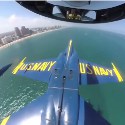 | Fly along in Blue Angels cockpit!
Since 1946, the Blue Angels have flown for more than 260 million spectators. Ride along with the Blue Angels Diamond pilots as they perform the Double Farvel over Fort Lauderdale Beach during the 2019 Fort Lauderdale Air Show. The mission of the United States Navy Flight Demonstration Squadron is to showcase the pride and professionalism of the United States Navy and Marine Corps by inspiring a culture of excellence and service to country through flight demonstrations and community outreach. We challenge you to watch this only once! (U.S. Navy video/Released)
Watch and ride in a Blue Angels cockpit. |
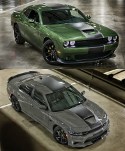 | Dodge Challenger, Charger get new Stars & Stripes Editions
Since Dodge says it is the U.S. automotive brand that has the highest percentage of active military buyers, it makes sense that it would make a special nod to servicemen and servicewomen in the form of limited edition Challenger and Charger models. Two of three versions feature HEMI V-8s with 370+ hp under those military-inspired hoods.
Read the full article. |
|
| | Videos+: Technologies and inspiration in action |
Lockheed Martin 3D prints space-ready parts
Lockheed Martin uses additive manufacturing, and specifically an ESD PEKK-based material, to produce flight-worthy parts for the Orion space mission to Mars and beyond. Additive provides repeatability and reliability of parts, as well as extra methods to make them more lightweight. They are also working on producing electrostatic-dissipative parts using Stratasys 3D printers.
Watch how. |
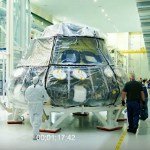 |
|
|